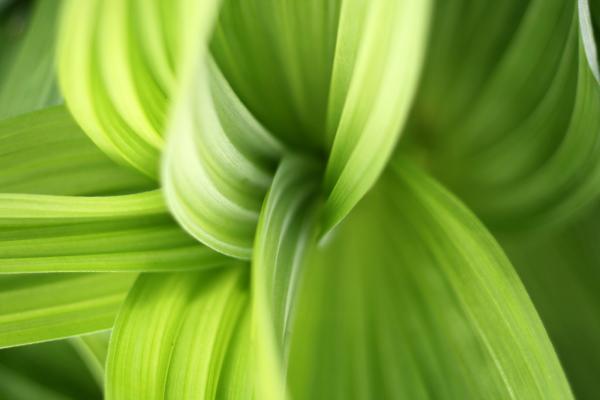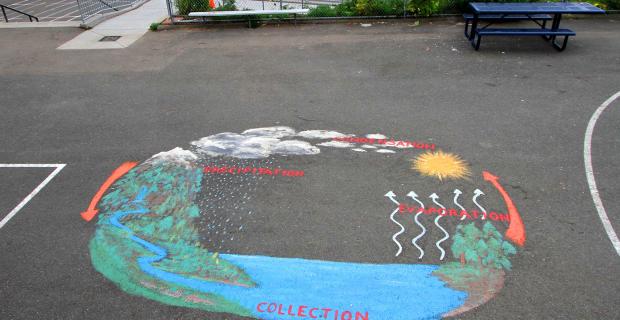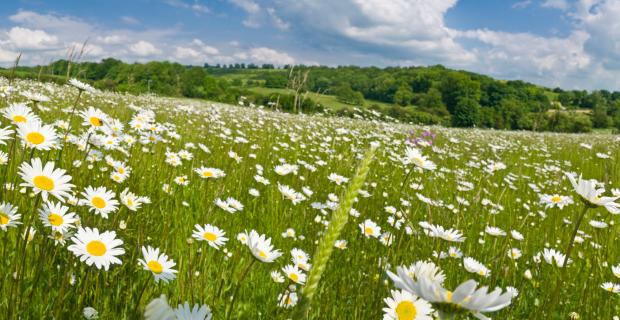Green: High, Wide, and Deep

"Green" is the color of the day.
Not only on Earth Day. I Googled "Green Products" and got ... 150 million hits ... "Green Jobs" (153 million) ... "Green Politics" (94 million) ... "Green Living" (84 million). You get the idea. We're awash in green, not to mention awash in greenwash. The word is so ubiquitous, as Michael Pollan once wrote about "sustainability," that "the whole concept is in danger of floating away on a sea of inoffensiveness." Can "green" mean anything useful?
The admirable folks at Green America took a stab at defining "green job" in 2010: "Before you start your journey to find a green job, it's important to know what to look for. A green job is any job that supports environmental and social responsibility. This includes solar panel installers and engineers, organic landscapers, holistic health providers, advocates for social justice and poverty reduction, investment advisors, community organizers, and more."
I wouldn't oppose any of that. I'm all for responsibility. Really for it. I want to see an explosion of jobs that provide a good living and support environmental and social responsibility. And I'm completely for an economy that achieves the goal of the U.N. Environment Programme's Green Economy Initiative, and contributes to "reducing greenhouse gas emissions, extracting and using less natural resources, creating less waste and reducing social disparities."
Green I Can Believe In
These ends are more than worthy. They're essential. But they're so utilitarian (reduce this, use less of that, create not so much of something else) that I'm left unsatisfied. I want "green" to evoke something more, something I can celebrate. I am quite aware that what I want a word to mean has nothing to do with what it's going to mean to anyone else. But that won't stop me from making my case. I call as my witnesses poet Gerard Manley Hopkins, physicist/systems theorist Fritjof Capra, farmer/philosopher Wendell Berry, poet Robinson Jeffers, environmental saint Rachel Carson, and leading educator David W. Orr.
Here's Gerard Manley Hopkins, late in the nineteenth century:
... Generations have trod, have trod, have trod;
And all is seared with trade; bleared, smeared with toil;
And wears man's smudge, and shares man's smell: the soil
Is bare now, nor can foot feel, being shod.
And for all this, nature is never spent;
There lives the dearest freshness deep down things ...
Say those words aloud: Lives ... dearest ... freshness ... deep down. That's green that I can believe in, embrace, and care enough about to work for. It's what draws me to the Center for Ecoliteracy.
We do this, says Center cofounder Fritjof Capra (see “What Is Education for Sustainable Living?”) by taking nature's ecosystems as our model, designing human technologies and institutions that honor, support, and cooperate with nature's principles and processes. More simply: the core principles of ecology "are different aspects of a single pattern of organization: nature sustains life by creating and nurturing communities."
Expanding "green" to encompass the creation and nurturance of community and turning our attention from objects to patterns takes us wide as well as deep. Wendell Berry offers an additional marker: health. He reminds us that for any system — an organism, community, economy, ecosystem — the health of the parts and the health of the whole are inseparable:
... A bad solution acts within the larger pattern [in which it is contained] the way a disease or addiction acts within the body. A good solution acts within the larger pattern the way a healthy organ acts within the body. But it must at once be understood that a healthy organ does not — as the mechanistic or industrial mind would like to say — "give" health to the body, is not exploited for the body's health, but is a part of its health. The health of organ and organism is the same, just as the health of organism and ecosystem is the same [“Solving for Pattern” in The Gift of Good Land]..
"Health" and "whole" (and "hale" and "wholesome") are kin, etymologically as well as metaphysically. They are cousins to "holy" and "hallowed," adding height to the depth and breadth in our vision of green. Robinson Jeffers knew this.
... man dissevered from the earth and stars and his
history ... for contemplation or in fact ...
Often appears atrociously ugly. Integrity is wholeness, the greatest beauty is
Organic wholeness, the wholeness of life and things, the divine beauty
of the universe. ...
And Rachel Carson saw exactly where it leads:
It is a wholesome and necessary thing for us to turn again to the earth and in the contemplation of her beauties to know of wonder and humility.
Let earth and beauty couple; their offspring is humility, which offers a standard for human practice, as Center for Ecoliteracy board member David W. Orr recognized in a charge to graduating design students:
... aim to cause no ugliness, human or ecological, somewhere else or at some later time. That standard will cause you to think upstream from the particular design project or object to the wells, mines, forests, farms, and manufacturing establishments from which materials are drawn and crystallized into the particularities of design. It will cause you, as well, to look downstream to the effects of design on climate and health of people and ecosystems. If there is ugliness, human or ecological, at either end you cannot claim success as a designer regardless of the artfulness of what you make.
We are all designers, of objects and systems, families and schools, businesses and communities. And I am utterly convinced that the coincidence of wholeness, health, holiness, and beauty is not arbitrary. If we are born into a state of biophilia, as E.O. Wilson has proposed, it is also the case that we have evolved to experience beauty in what is healthy, and divinity in what is whole. We're hard-wired for it. Or, to use an organic rather than mechanical image, it's in our DNA.
To be green is to be true to who we are, at the core.




